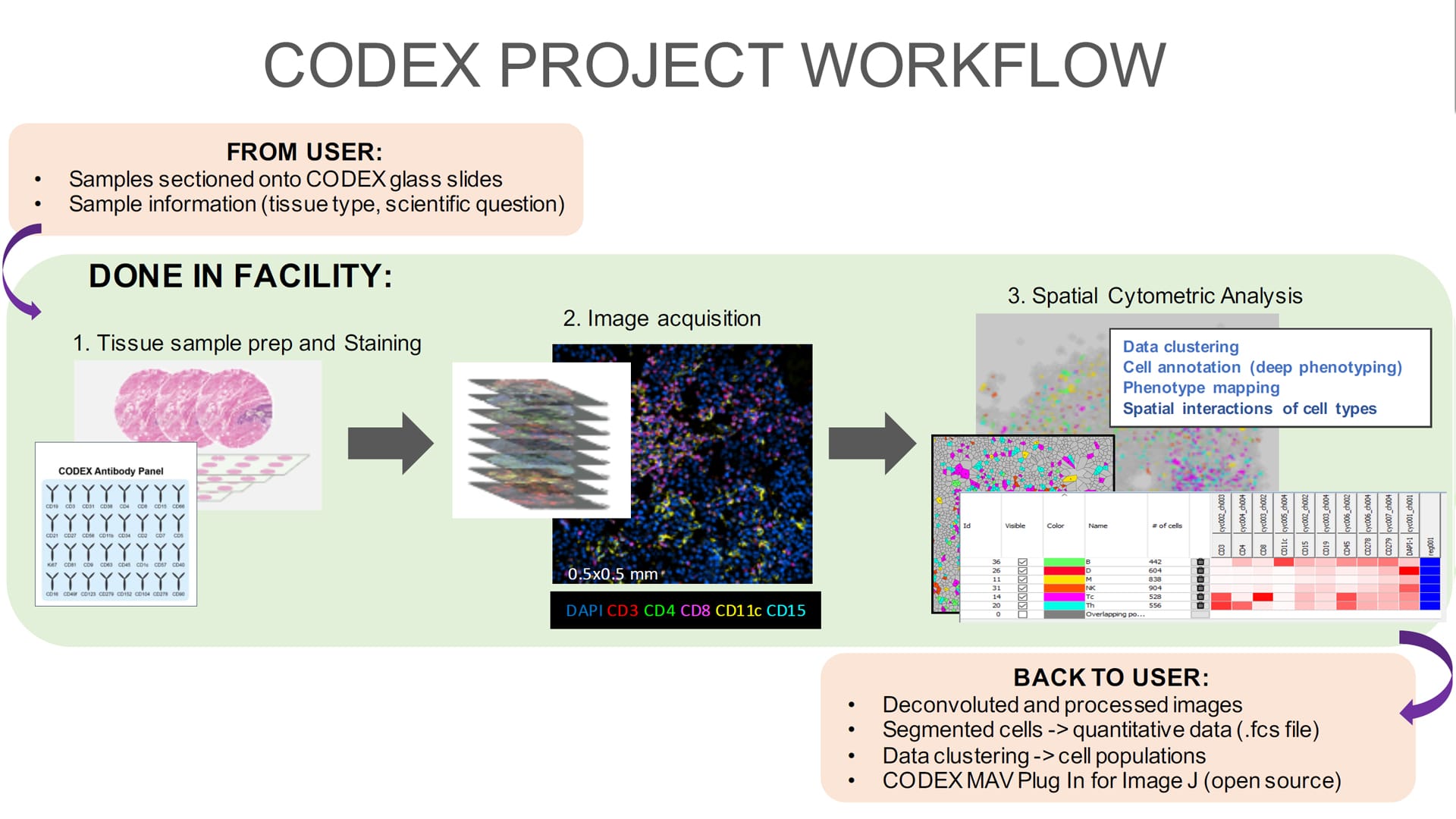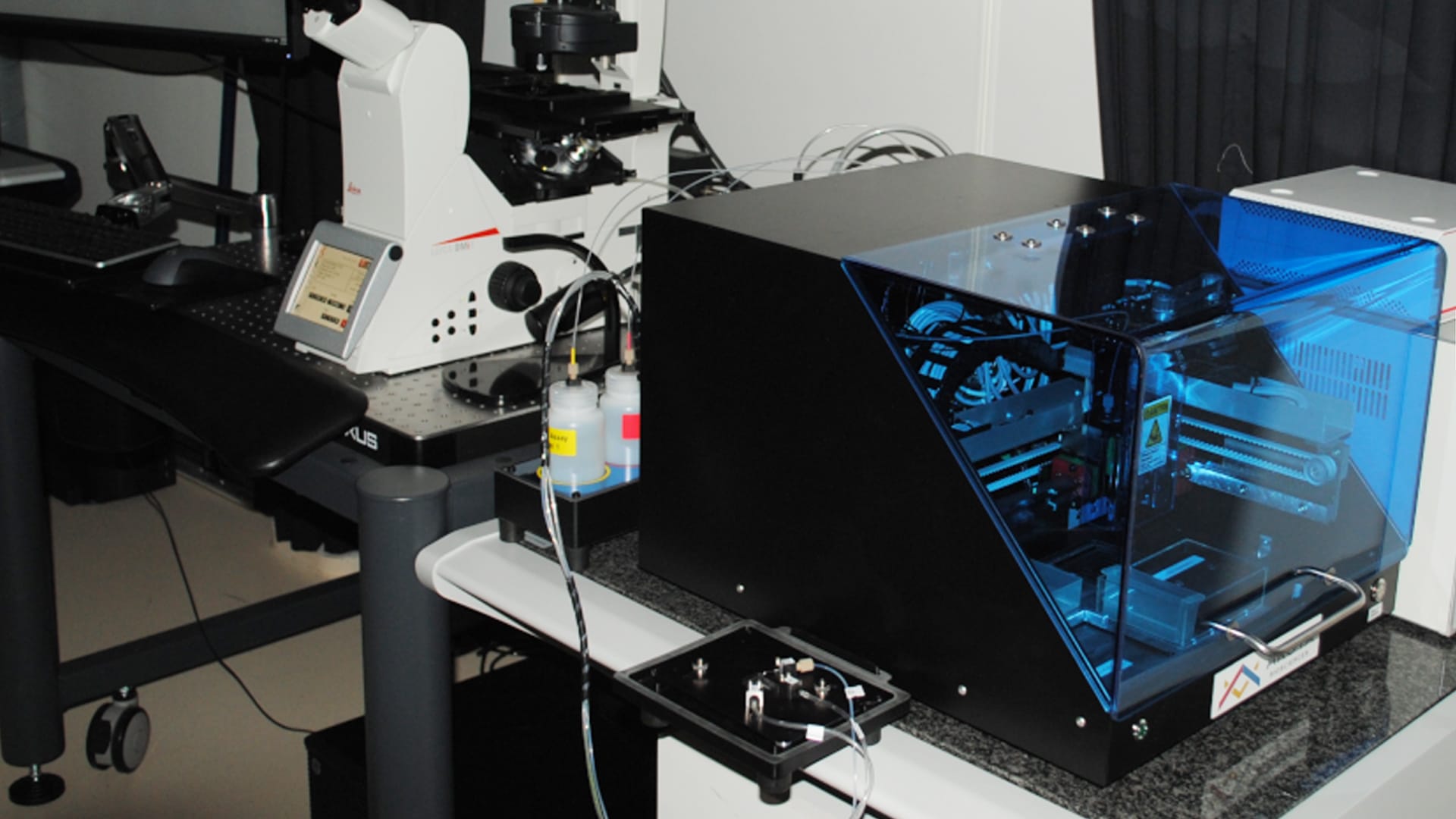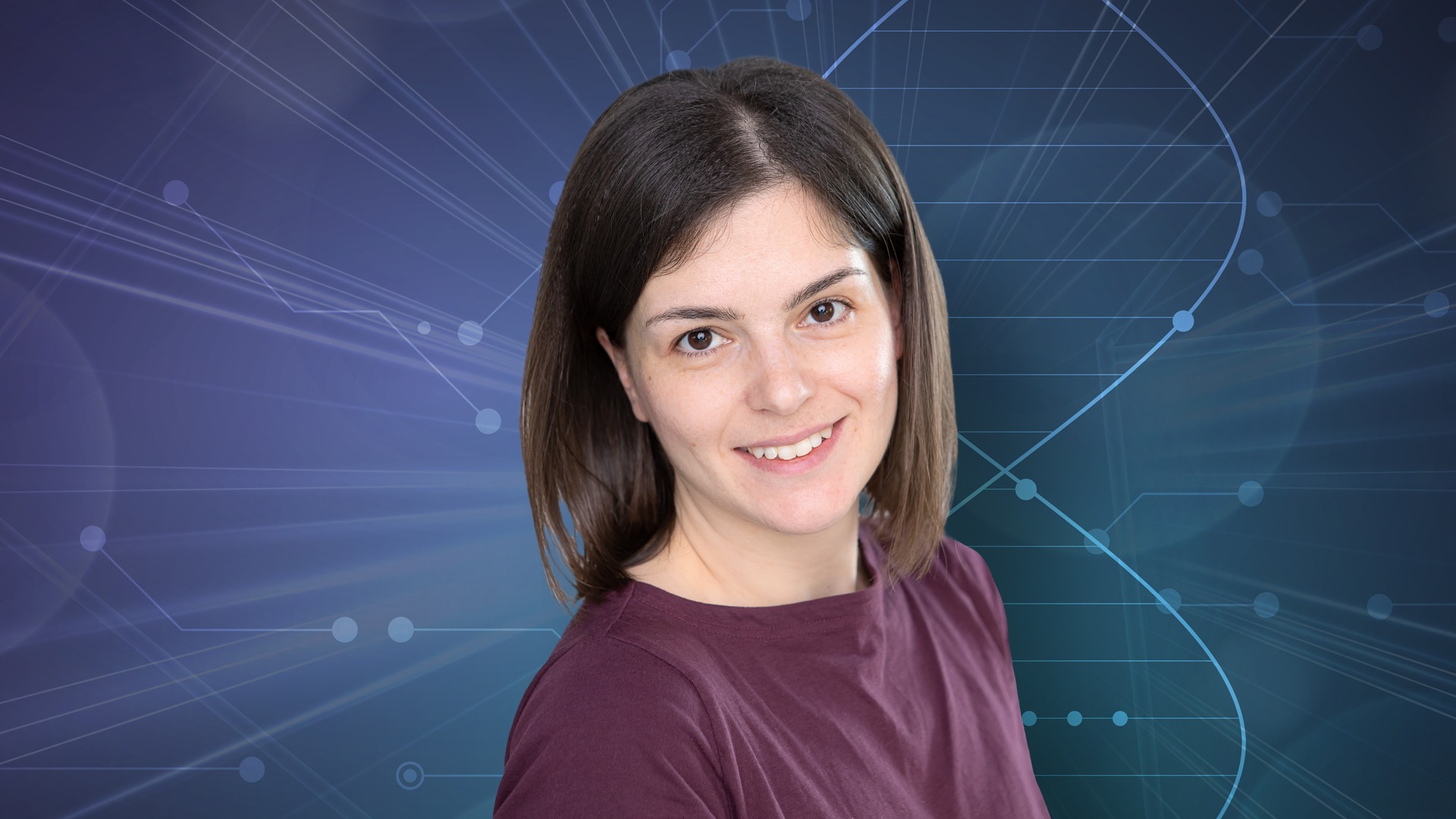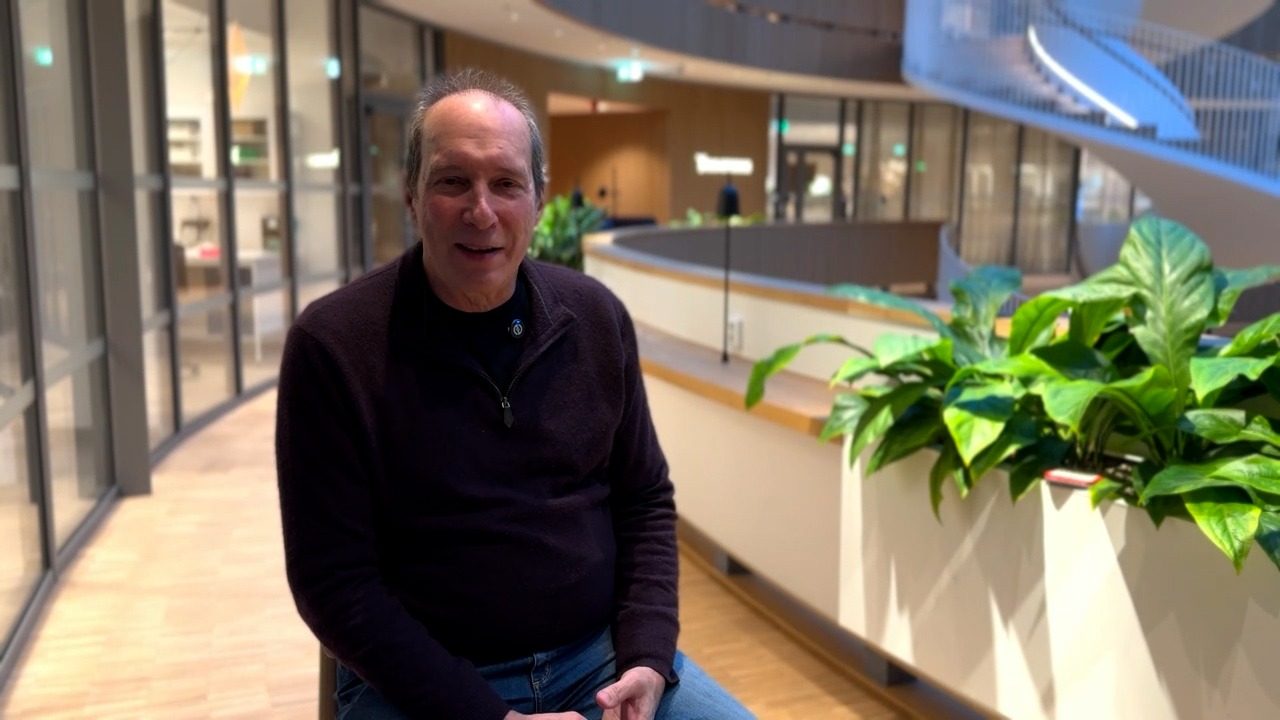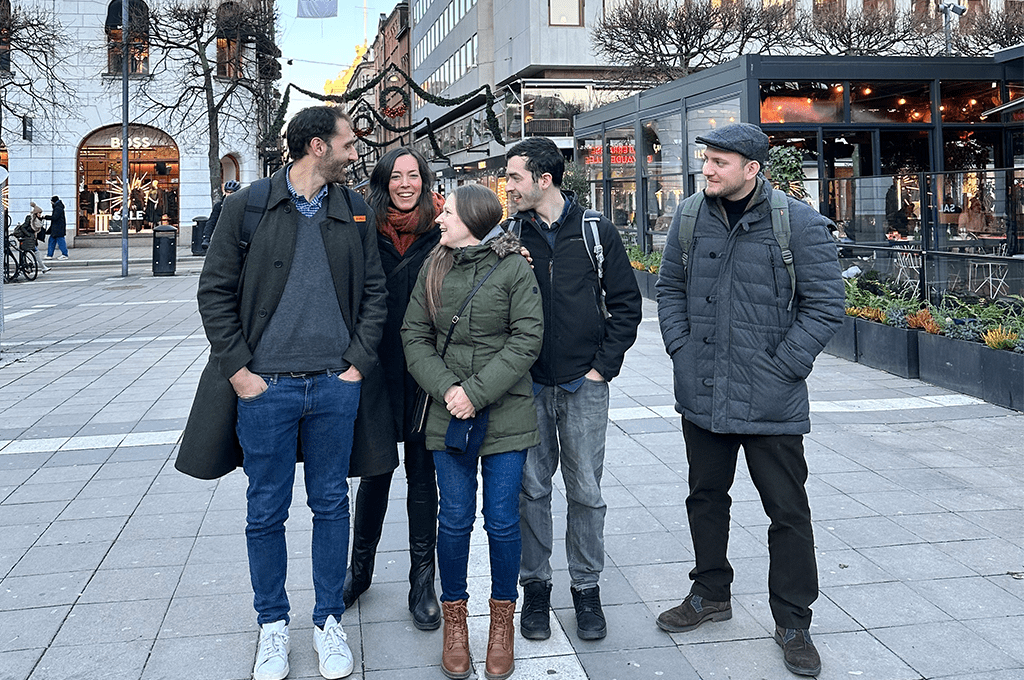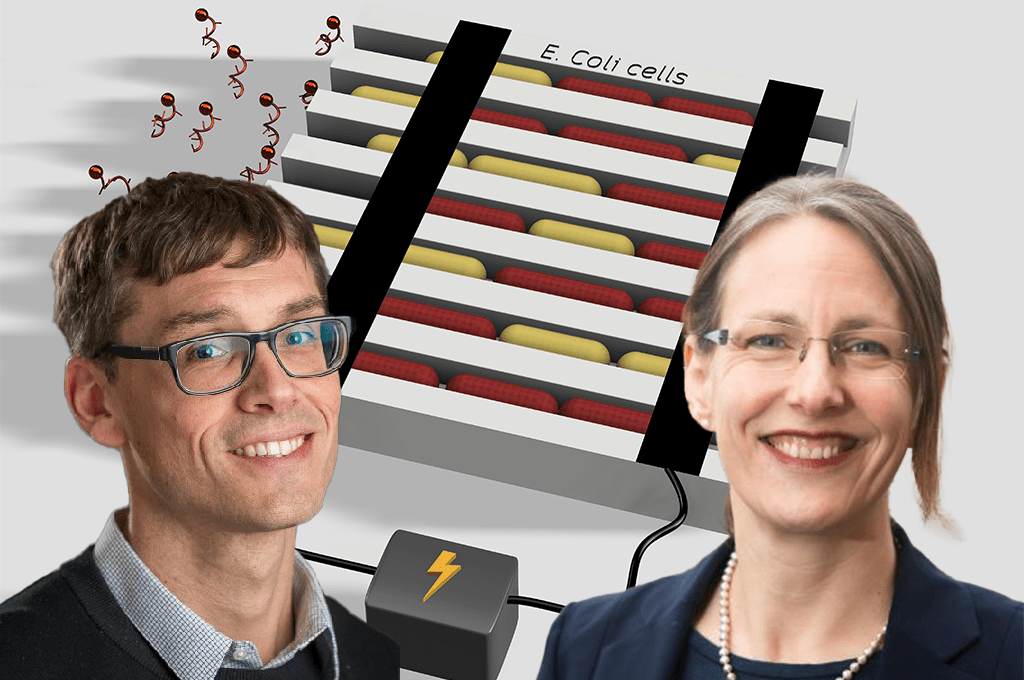Highly Multiplexed Imaging with CODEX – a new service in the Cell Profiling Unit
The Cell Profiling Unit at SciLifeLab now offers highly multiplexed imaging using the CODEX (Co-Detection by indEXing) platform. The technology allows for detection of more than 50 proteins in the same tissue section at single cell resolution with quantitative data of each and every protein. Since 2018 the Cell profiling Unit, together with Prof Emma Lundberg, was part of the CODEX early access program. Now, the technology is available as a service to the research community.
Charlotte Stadler (SciLifeLab/KTH), Head of the Cell profiling Unit, explains the technology and the service offered.
How does the CODEX technology work?
This technology is based on the principle of cyclic detection of oligo-conjugated antibodies that are incubated in one single step. The tissue slide is then mounted onto the microscope stage in a microfluidics chamber. By adding fluorescently labelled oligos complementary to the antibodies, the corresponding proteins are detected by the fluorescence microscope in iterative cycles. These signals are then combined into a multi-channel image stack and subjected to image segmentation and quantification. The output data is thus a combination of processed microscopy images and quantitative data and spatial coordinates for each cell in the tissue section that can be analyzed using many different software.
What are the main advantages of using such highly multiplexed imaging approach as CODEX?
The main advantage is that you get much more data from the very same sample and this gives you the possibility to do deeper phenotyping of individual cells. In many cases such deeper profiling is needed as tissue sections often represent large cell heterogeneity that cannot be distinguished by morphology alone but requires specific molecular markers to be revealed. As so much data can be extracted from one single sample, both time and sample material can be reduced. For CODEX, the samples can also be re-used and combined with regular H&E stains.
What kind of samples and proteins can be analysed with CODEX in your unit?
The technology is compatible with fresh frozen (FF) and formalin fixed paraffin embedded (FFPE) cells and tissue sections. It can also be used for tissue micro arrays (TMA).
Validated antibody panels are available for mouse and human target proteins and are focused on different immune cell populations and some structural as well as functional markers. The number of targets is constantly increasing and it is also possible to conjugate antibodies for other targets using conjugation kits.
How much does a CODEX project cost?
As a National SciLifeLab Unit we charge for reagents and instrument use. For academic users all the work performed by the staff scientists in the unit are paid by our grants. For non-academic users we apply a full cost, on profit model. The same applies for international users.
Can you tell me about any projects you have already done or any current project?
Since spring 2020 we have done a few pilot projects and delivered data to the users who are now further analysing the data. These samples have been both on FF and FFPE sections including TMAs, and the we have run between 14-25 markers in each project. The users have been both from academia and industry. We are now preparing for a larger project where we will run several TMAs including many tissue types from post mortem COVID 19 patients.
How do I apply for a project and how do I submit samples?
The first step is to contact the unit at cellpro.unit@scilifelab.se and shortly describe the project. The most important to address is what kind of samples (tissue origin and whether they are fresh frozen or paraffin embedded) and the approximate number of samples you wish to run. We will then get back to you to schedule a meeting to discuss your project further. Upon project approval we will send you details on how to prepare the sections and give recommendations for shipment of the samples. As the samples for CODEX are tissue sections mounted onto glass slides, it does not matter if your lab is the same building or across the globe as they can be easily sent by mail.
You can read more about CODEX and the unit here: https://www.scilifelab.se/units/cell-profiling
